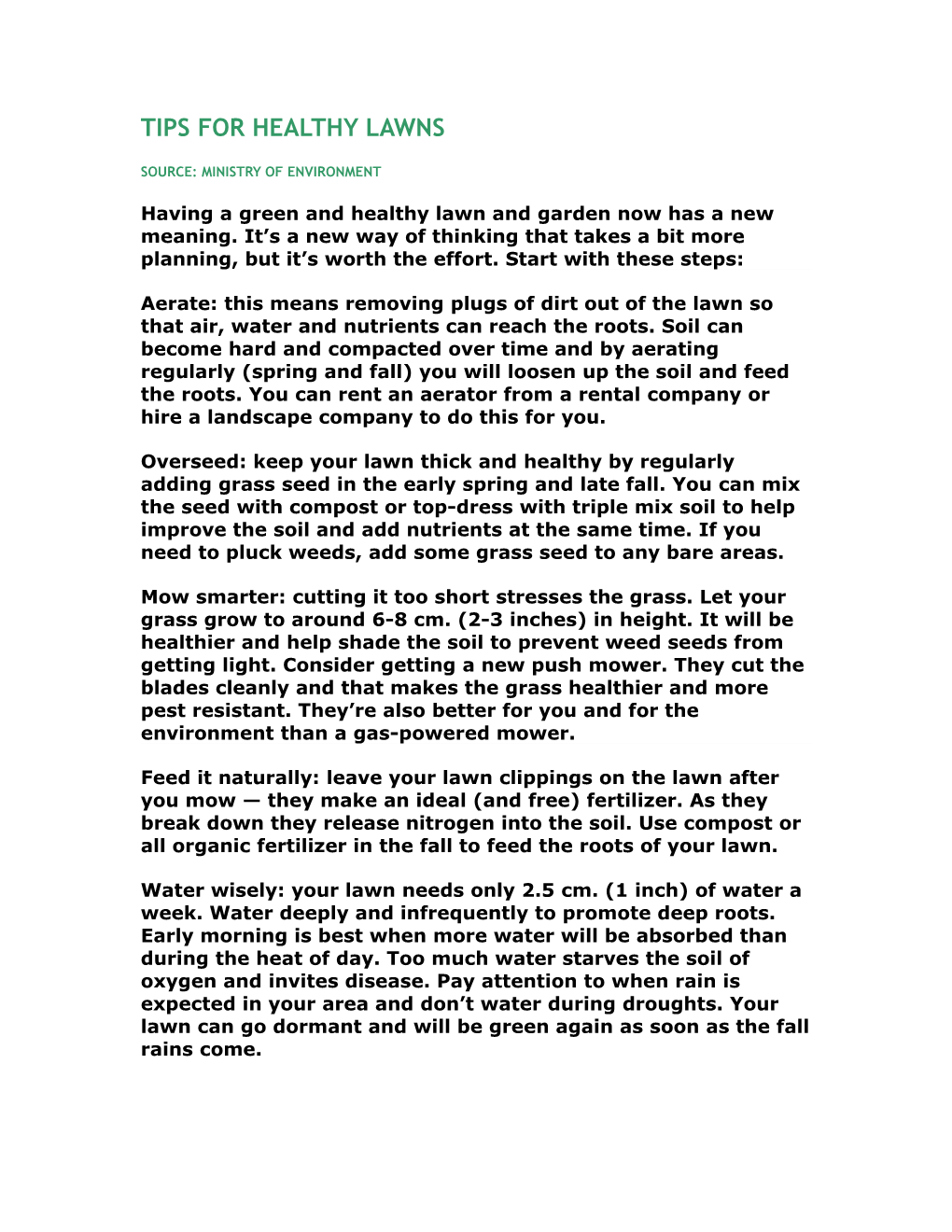Tips for Healthy Lawns
Source: ministry of Environment
Having a green and healthy lawn and garden now has a new meaning. It’s a new way of thinking that takes a bit more planning, but it’s worth the effort. Start with these steps:
Aerate: this means removing plugs of dirt out of the lawn so that air, water and nutrients can reach the roots. Soil can become hard and compacted over time and by aerating regularly (spring and fall) you will loosen up the soil and feed the roots. You can rent an aerator from a rental company or hire a landscape company to do this for you.
Overseed: keep your lawn thick and healthy by regularly adding grass seed in the early spring and late fall. You can mix the seed with compost or top-dress with triple mix soil to help improve the soil and add nutrients at the same time. If you need to pluck weeds, add some grass seed to any bare areas.
Mow smarter: cutting it too short stresses the grass. Let your grass grow to around 6-8 cm. (2-3 inches) in height. It will be healthier and help shade the soil to prevent weed seeds from getting light. Consider getting a new push mower. They cut the blades cleanly and that makes the grass healthier and more pest resistant. They’re also better for you and for the environment than a gas-powered mower.
Feed it naturally: leave your lawn clippings on the lawn after you mow — they make an ideal (and free) fertilizer. As they break down they release nitrogen into the soil. Use compost or all organic fertilizer in the fall to feed the roots of your lawn.
Water wisely: your lawn needs only 2.5 cm. (1 inch) of water a week. Water deeply and infrequently to promote deep roots. Early morning is best when more water will be absorbed than during the heat of day. Too much water starves the soil of oxygen and invites disease. Pay attention to when rain is expected in your area and don’t water during droughts. Your lawn can go dormant and will be green again as soon as the fall rains come.
Pluck weeds by hand: spring is a good time to hand-pull weeds like dandelions while the soil is damp and their roots are not so long and tough. Get a weeding tool (fork or claw designs work well) and the job will be faster and easier. Then add some compost and grass seed on the spots you’ve weeded.
Select grass varieties to suit soil and growing conditions: There are some new varieties of grass seeds out there that are better suited for our Ontario summers. Choose hardy grasses that don’t require a lot of care and are specific for your property, either shady or sunny locations.
Other useful references:
MOE is suggesting that a physical or mechanical approach along with good cultural maintenance is the approach to take:
OMAFRA has a fact sheets on lawn renovation and maintenance:
Pesticide Ban references
For general backgrounder (under news update)
For homeowner backgrounder (under what you need to know)
For classification piece
For complete list of pesticides, Class 1- 11
